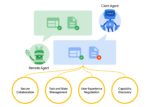
Over the past year or so, the industry has seen several open-source projects forked because the founders of those projects changed their licenses in moves they say were to protect their intellectual property.
Redis switched from the open BSD license to the more restrictive Redis Source Available License v2 and the Server Side Public License after seeing Microsoft adopt and benefit from Redis’ work without what Redis said was enough support for the community and to Redis itself. MongoDB acted similarly, and then Elasticsearch followed suit, all adopting licenses that the Open Source Initiative deemed not open source due to the restrictive nature of the new licenses.
This led to the projects being forked, either by the communities around those projects or by organizations looking to maintain them as free and open. Among the more recent forks are OpenTofu, a fork of Hashicorp’s Terraform for infrastructure as code, and Valkey, which forked the Redis project for distributed cache and memory store. Both of those projects are now under the auspices of the Linux Foundation.
But the benefits these originating companies sought weren’t released, as many of the contributors went with the forked version, to keep the open source ethos alive in those projects. It has been reported that before the project was forked, 12 people who did not work for Redis contributed 12% of the additions and 15% of the deletions, and accounted for 54% of the commits to the project. After the fork, the project had no non-employees with more than 5 commits. By contrast, the Valkey project, now just more than a year old, has 150 active contributors, 50 contributing organizations, over 1,000 commits and 20,000 GitHub stars.
And so yesterday, Redis announced it was adding the OSI-approved AGPLv3, starting with Redis 8, which introduces vector sets. (In August 2024, Elastic also added that license to its offerings.)
David Nalley, director of developer experience at Amazon Web Services, which — along with organizations such as Google and Oracle supported the community’s Valkey fork that came under the auspices of the Linux Foundation — told SD Times at KubeCon London early last month that since the fork, the rate of development has picked up. “I don’t blame Redis for doing what they felt they had to do,” he said in an interview. And, he noted with a touch of irony, that Redis was actually using the code generated from the Valkey project in their own offering. “And that,” he said, “is how open source is supposed to work. Anyone can benefit from the work.”
Vadim Tkachenko, co-Founder and Technology Fellow at Percona, called the move a positive step that aligns with the wants of developers and for enterprises using the technology in partnerships “built on trust and flexibility rather than vendor lock-in.” But he went on to criticize the use of the AGPL license, which he said has restrictive terms for code reuse and distribution, and creates barriers for public cloud providers. This, he said, “likely guarantees that major [project] sponsors like Amazon and Google will continue to support Valkey. For Redis, this appears to be largely a marketing maneuver to appease their user base by claiming open source credentials.”






